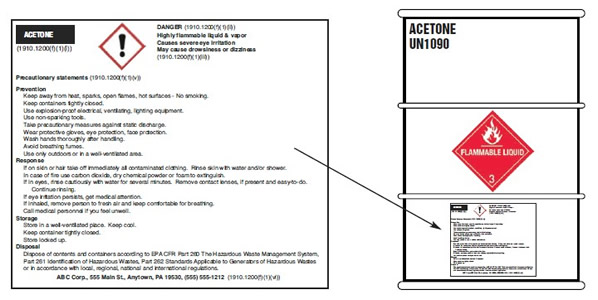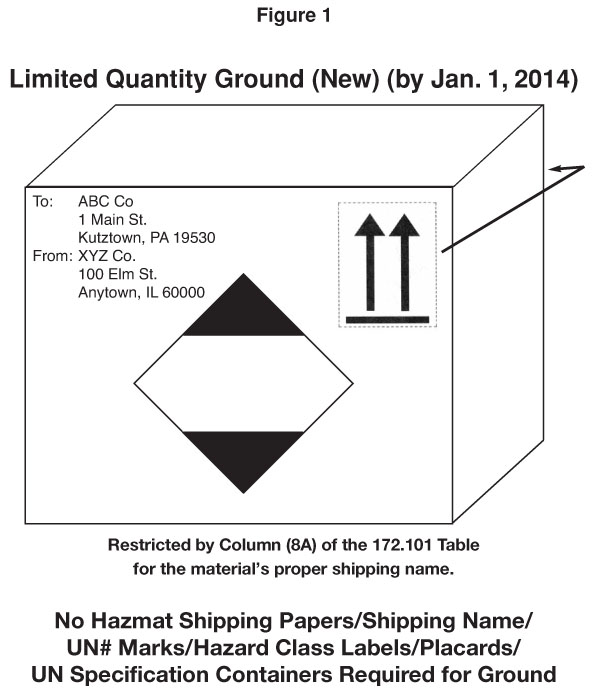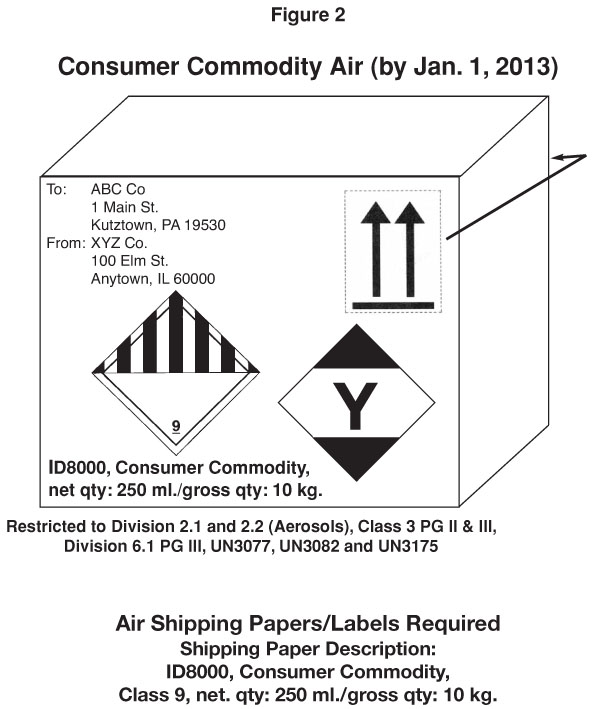| The OSHA Pictograms and the DOT Labels are like Clark Kent and Superman, you will never see them in the same place. Do you know the difference between Department of Transportation (DOT) shipping labels and OSHA worker protection labels? You should, because the Occupational Safety and Health Administration’s new GHS square on point, red bordered (diamond shape) Pictogram on the OSHA hazard communication worker protection label may not appear on the same container as a DOT 4 x 4, square on point hazard class transportation label if they represent the same danger. |
OSHA GHS LABELS |
When looking at the 29 CFR 1910.1200, the OSHA GHS labels are comprised of six sections:
|
| That’s a handful as opposed to the 49 CFR Department of Transportation’s hazard class labels, such as Flammable Liquid, Class 3. DOT only regulates a hazardous material because it meets the definition of one of DOT’s Hazard Classes. Unlike OSHA, DOT does not regulate health hazards, as a general rule, because they don’t protect workers. |
DOT HAZARD CLASS LABELS |
The DOT Labels contain only:
|
| So DOT labels have only three components, whereas the OSHA GHS labels have six components. |
| OSHA PICTOGRAMS |
| I do not want to talk about the OSHA GHS labels in their entirety. I only want to talk about the pictograms found on the labels. The OSHA pictograms are not the same as the DOT transportation labels. Nor are they DOT hazard class labels shrunk down to a smaller size with a red border. A pictogram can never be used in place of a DOT hazard class label in transportation but, a DOT Hazard Class Label may take the place of a pictogram when protecting workers, because OSHA states a DOT hazard class label may not appear on the same package as an OSHA pictogram of the same hazard class.
OSHA states in 29 CFR 1910.1200 Appendix C, “Where a pictogram required by the Department of Transportation under Title 49 of the Code of Federal Regulations appears on a shipped container, the pictogram specified in C.4 for the same hazard shall not appear.” |
| *OSHA AND DOT HAZARD CLASSIFICATIONS |
| If you have a chance to look at the Health Hazard Classifications in 1910.1200 Appendix A and the Physical Hazard Classifications in Appendix B, you will find the definitions, in many cases, are identical to the DOT definitions under 49 CFR. For example, a Poison or Toxic material in Packing Group I under DOT would be a Toxic Material in Category 1 under OSHA. A Corrosive in Packing Group II in transportation has the same definition as a Corrosive in Category 2 under the OSHA GHS Hazard Communication Requirements. Acetone is a Flammable Liquid, Class 3, Packing Group II in transportation under the DOT, and Acetone is a Flammable Liquid in Category 2 in Appendix B – Physical Hazards under the OSHA Worker Protection Regulations.
Under OSHA, Acetone is not only regulated because it is a Flammable Liquid, Category 2, it also meets the definition in Appendix A – Health Hazards for an Eye Irritant Category 2 and Specific Target Organ Toxicity Single Exposure Category 3 (both requiring an Exclamation Mark Pictogram), which DOT does not regulate. |
SINGLE PACKAGING |
| Under DOT, Acetone, in transportation in a single packaging, must have a 3-part Class 3 Flammable Liquid hazard class label on the container and the 6-part OSHA label with just the red border Exclamation Mark pictogram. |
COMBINATION PACKAGING |
| If you were to ship in a combination packaging, with both an inner container and outer container to form one package (i.e., a plastic bottle inside a fiberboard box), the outside packaging (box) would require the 4 x 4 DOT Flammable Liquid Label for shipping. The inner packaging (plastic bottle) would display both the Flammable Liquid Pictogram and the Exclamation Mark Pictogram inside the 6-part OSHA label. Combination packaging for a Category 2 (PG II) flammable liquid (Class 3) (App. A, B) Outer Packaging: Box with UN# Shipping Name, a DOT 4 x 4 transport label* Inner Packaging: Plastic bottle with GHS hazard communication warning label** |
| Combination packaging for a Category 2 (PG II) flammable liquid (Class 3) (App. A, B) Outer Packaging: Box with UN# Shipping Name, a DOT 4 x 4 transport label* Inner Packaging: Plastic bottle with GHS hazard communication warning label** |
FLAMMABLE AND POISON |
| Another example might be a container that is both flammable and poisonous under DOT, which would mean the material was also flammable and poisonous under the OSHA Worker Protection Regulations. In transportation, a single packaging would display both the DOT 4 x 4 Flammable Liquid label and the Poison or Toxic label in place of the pictograms inside the OSHA label. |
SINGLE CONTAINER |
| If this were a single container, the DOT labels would appear on the container and then on the OSHA 6-part label, the pictograms for Poison and Flammable Liquid would not appear because the DOT 4 x 4 hazard class labels take the place of the pictograms on the OSHA Label. |
COMBINATION CONTAINER |
| However, if you were to ship the same material in a combination packaging, the outside container would not require the OSHA label because it is not the primary container, but would display the 4 x 4 DOT Flammable Liquid and Poison labels. Then the inside container would have the OSHA Flammable Liquid and Poison Pictograms inside the OSHA label. |
OSHA DOES AND DOT DOES NOT |
| Be aware that OSHA regulates materials that the DOT does not, because the DOT protects transportation and OSHA protects workers. If a pictogram is required by OSHA, but not required or regulated under DOT, the pictogram would always appear on the OSHA labels.
The OSHA Flame Pictogram, the Flame Over Circle Pictogram, the Exploding Bomb Pictogram, the Corrosive Pictogram, the Gas Cylinder Pictogram and the Skull and Crossbones Pictogram all have corresponding DOT Hazard Class 4 x 4 labels. But the Exclamation Mark and Health Hazard Pictograms do not have corresponding DOT definitions or 4 x 4 hazard class labels. So that means the Exclamation Mark and the Health Hazard Pictograms would always appear inside the 6-part OSHA label when required. If the OSHA pictograms could be used in place of DOT hazard class labels for transportation or the DOT hazard class labels and OSHA pictograms could appear on the container together, it would have been much easier to comply with both the transportation and worker protection regulations. But if it made sense, they would probably change it to keep us confused. If you’re not sure which or when or where to use the labels or pictograms, give us a call or send us an email. We will gladly help you out because a minute or two on the phone will save you a lot of grief later on. Thank you for your readership and support. |







